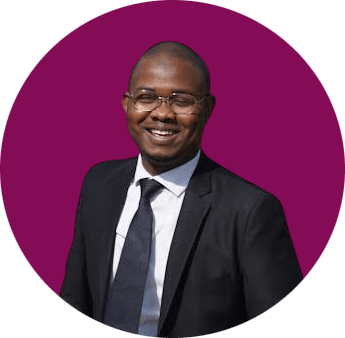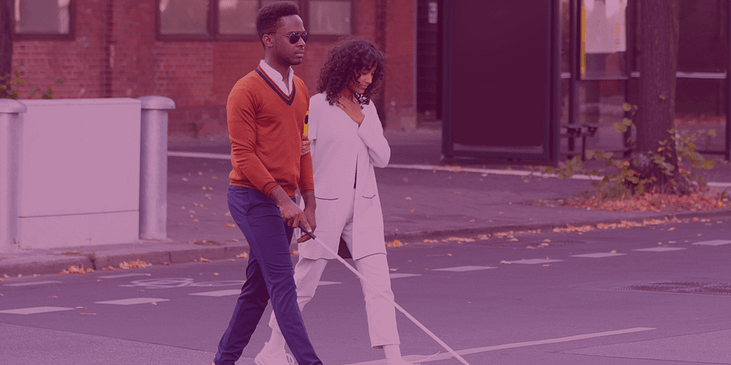By Dikko Yusuf
Multiply marginalized people with disabilities are those who, in addition to being disabled, also belong to another marginalized group. This includes those who belong to marginalized genders, races, ethnicities, sexualities and/or economic backgrounds. As we observe Preparedness Month, it’s a fitting time to consider what preparedness should look like for multiply marginalized disabled people, who are often the worst off during and after disasters and emergency situations.
Multiply marginalized disabled people, in particular, face more layers of barriers that limit their access to resources, which impede their ability to plan for, and recover from disasters and emergencies. It is not merely a question of choice whether or not to prepare, respond or initiate a recovery plan in a crisis. It’s fundamentally about the availability of necessary resources and services in communities. Studies have found that “groups including poor women; people with lower incomes; public housing residents; and women who were homeless, unemployed, and of low-income status lacked money and resources needed to evacuate—so, although they received warnings, they were less able to respond to them than people of higher socioeconomic status.” Multiply marginalized communities generally don’t have adequate resources and are often at the back of the queue when aid is being distributed. According to the National Council on Disabilities (NCD), “people with disabilities, especially those living in poverty, were disproportionately left behind in Hurricane Katrina.” Statistics reveal that during the H1N1 pandemic, Indigenous people’s mortality rate was 4 times higher than other groups.
During the COVID-19 pandemic, Black, Pacific Islander and Indigenous Americans all had higher crude death rates than white Americans, according to the Centers for Disease Control and Prevention. The COVID-19 pandemic led to the shutdown of economic activities and cost governments huge sums to manage. The Lancet Commission on COVID-19 Response discovered “widespread failures during the COVID-19 pandemic at multiple levels worldwide.” The commission also says that the failures “led to millions of preventable deaths and a reversal in progress towards sustainable development for many countries.” Most of these deaths were People of Color with “pre-existing conditions” a.k.a. disabilities. One crucial misstep that governments made was failing to act on time when early warnings were raised. Margaret Harris, the spokeswoman for the World Health Organization, said in a panel discussion that “if [governments] spend the money early, [it] might seem like a bit of money, but it’s so much less money that we’ve all lost and the terrible economic consequences that we’ve seen, as a result of not acting early when the alarm was raised.” The shortfall in global funding for low and middle-income countries, for instance, meant more variants emerged due to widespread infection from the virus in some countries, which cause more lockdowns and more government spending. With U.S. President Joe Biden recently declaring the COVID-19 pandemic is over, multiply marginalized people with disabilities, who continue to be more susceptible to the virus, have only grown more fearful and frustrated than ever about being left behind. With over 400 COVID deaths per day continuing to occur in the U.S. as of September 23, abandoning masking and other preventative and personal protective measures under the guise of the pandemic being “over” continues to put disabled people in danger.
How can multiply marginalized people with disabilities be prioritized?
Governments at both local, national and international level cannot keep repeating the same mistakes as in past crises and emergencies. The way to prepare better is to ensure that disabled people, especially multiply marginalized groups, are engaged in disaster preparedness planning at the highest levels of leadership. Their efforts should focus on the acceleration of vital accessible resources that can aid disaster response, humanitarian aid, and recovery efforts in communities that are at greater risk. They must also focus on providing disaster and emergency preparedness information and alerts, in accessible formats with meaningful information. CDC estimates that health inequities experienced by d/Deaf sign language users are almost always caused by miscommunication or exclusivity. Last year, during WID’s three-part event series: Deaf-Led Disaster Resilience, d/Deaf leaders from Japan, Haiti, Nigeria, Vietnam, and Trinidad & Tobago shared that disaster preparedness information was often not shared in sign language so they could not adequately prepare. This access barrier continues in disaster after disaster. In Ukraine, d/Deaf Ukrainians don’t always have access to information about evacuations and bombings, or locations of shelters. In Haiti, information on essential services such as food and water distribution, shelter locations or family reunification centers are not provided to survivors who are deaf.The vast majority of plans around the globe do not have plans to provide public information and alerts that include disabled people.
The media also has a big role to play. Many news and current affairs television programs invoke ableist rhetoric and tropes about multiply marginalized people with disabilities being “vulnerable” and only report on the plight of people with disabilities after a disaster has already occurred, and the disproportionate impact has been experienced again. The mere use of the term ‘vulnerable’ implies that the individuals are somehow at fault. A cursory glance at the profile of experts and career professionals that are invited to discuss major news stories, reveals how underrepresented disabled people are in the media, which is why our stories never get told accurately. Sarah Kim writes that “without seeing disabled people included in a space, it becomes easy to assume that disabled people do not belong in that space.” The media shapes and sets the tone of important debates that influence policy decisions. It also gives people visibility that facilitates their ascension to positions of influence. Giving multiply marginalized disabled people a seat at the table, not just as storytellers but decision-makers, will help to refocus minds and priorities.
A world that is inclusive of multiply marginalized disabled people reduces the impact and cost of disasters and emergencies. A good starting point is to listen and involve multiply marginalized disabled people as partners in the planning for preparedness, response and recovery from disasters, emergencies. Government and private organizations should also include, consult with and listen to disabled people organizations, and let them lead in facing the challenges ahead.

Dikko Yusuf is a Freelance Writer for WID.


0 comments on “Why Multiply Marginalized People with Disabilities Should be Prioritized Before, During and After Disasters and Emergencies”